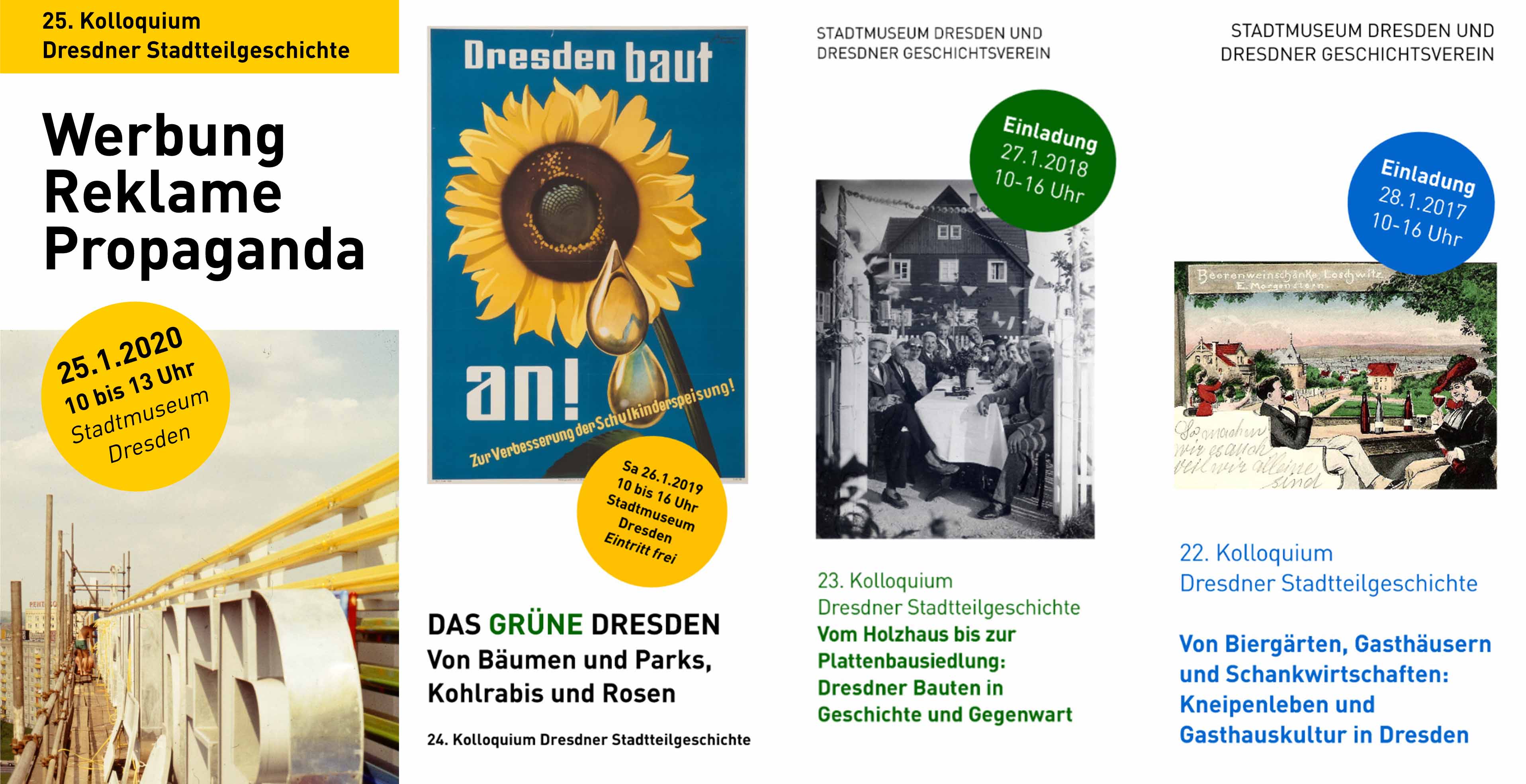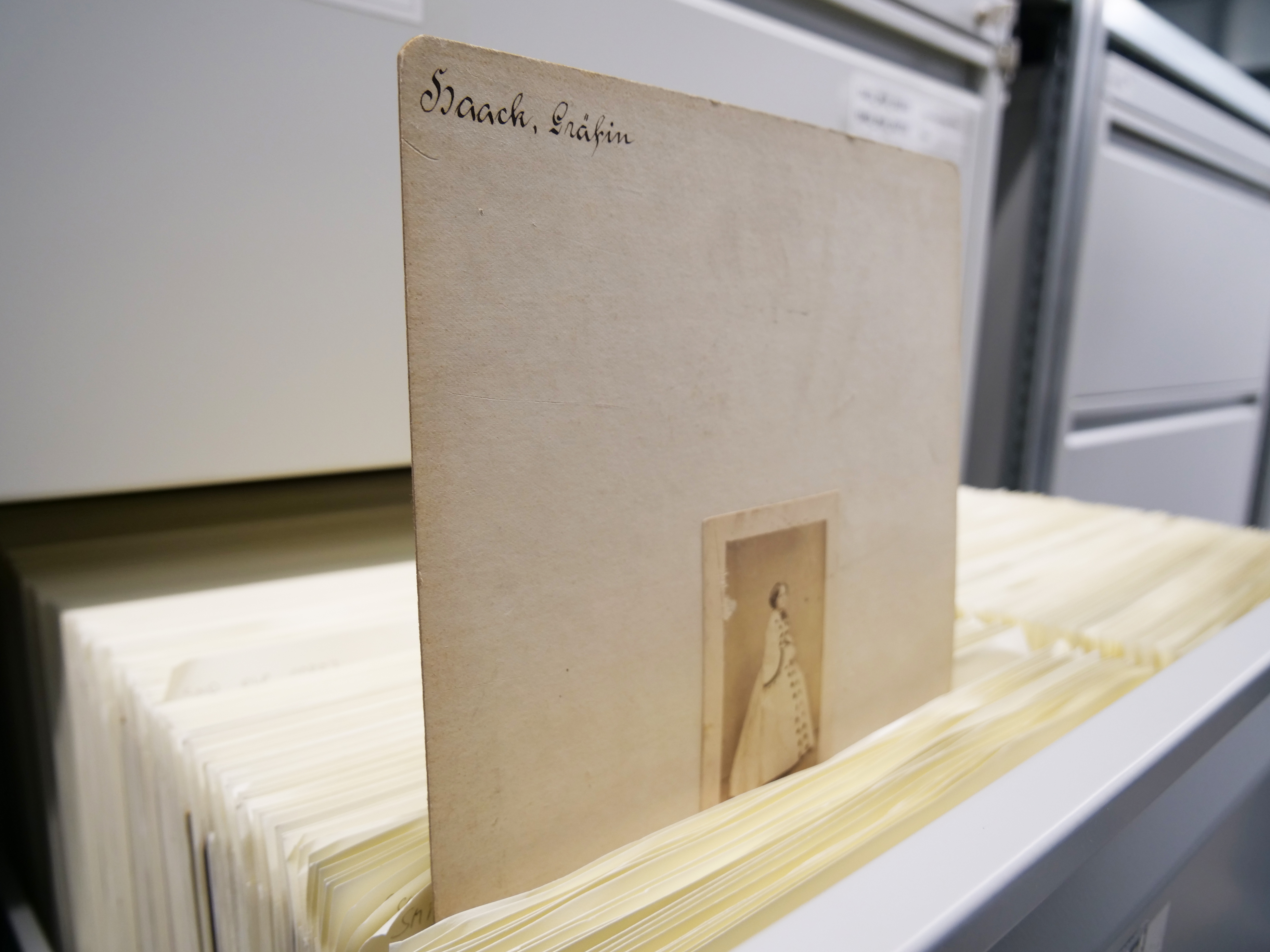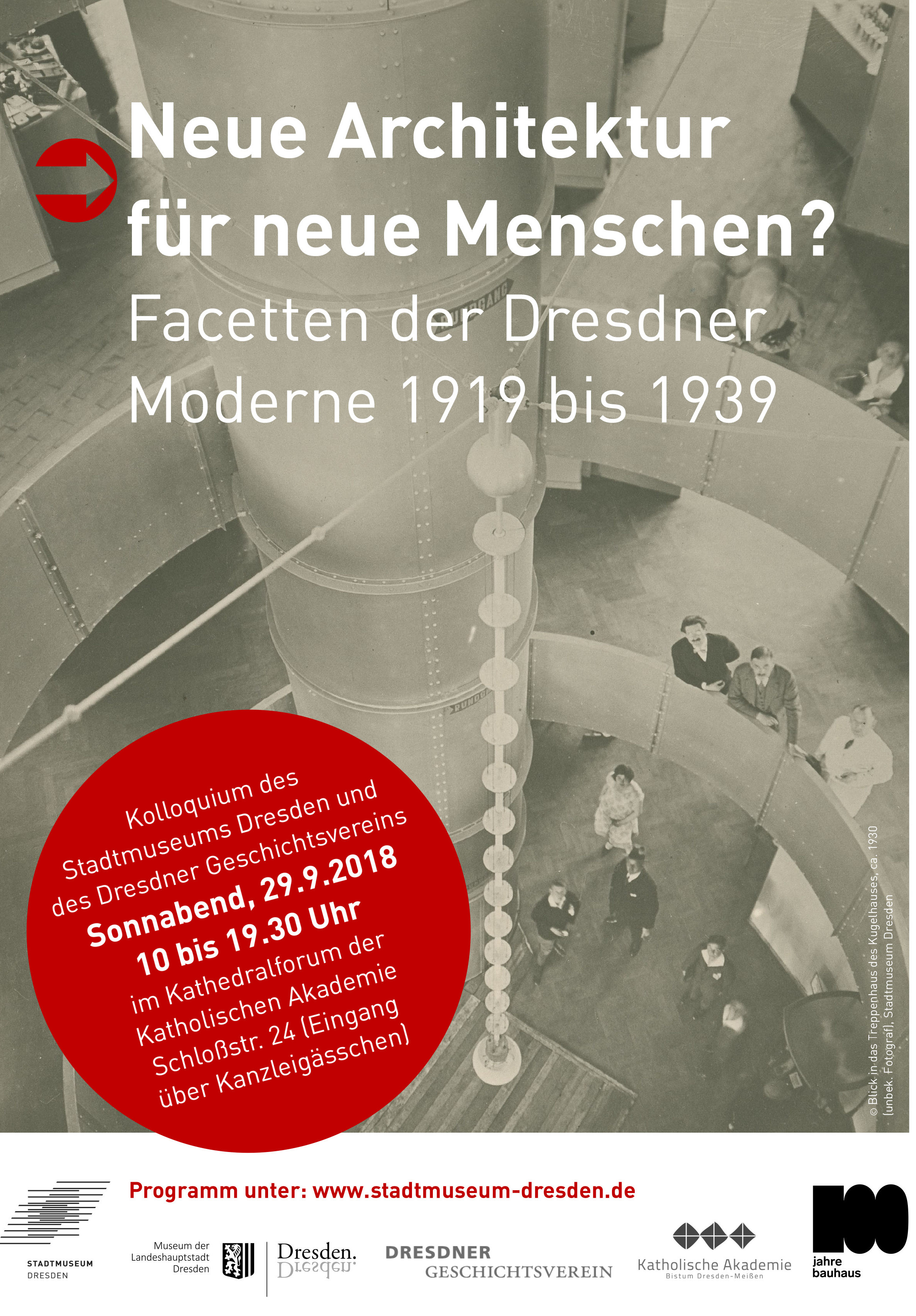
Archive of the neighbourhood colloquia
2015: Painted, sung about, skilfully crafted. Neighbourhoods as places of art
2014: On the move – transport in the city districts. From the market route to urban rail and long-distance transport
2013: Celebrating festivals. Diverse festival culture in the city districts then and now
2012: Former disasters in the city districts. Of plague, war, storms and other disasters
2011: Busy neighbourhoods. Between Kesselsdofer Straße, the airport in Klotzsche and Sachsenwerk Niedersedlitz
2010: »Built on water.« The wet element in the history of the neighbourhoods
2009: 40 plus 20: Life in the neighbourhoods from 1949 to 2009
2008: Honoured or forgotten. Personalities of the city's history
2007: Living in a neighbourhood
2006: From Frosch-Cotta to Kamerun
2005: Neighbourhood life during the National Socialist era
2003: Incorporation to a city with half a million inhabitants
From 1996 to 2002 and 2004, the colloquia were held without a designated topic.

The masses do it? Cataloguing methods and ways of gaining knowledge when working with mass collections
Behind many objects that are presented as individual items in collections of various kinds, there are mass holdings in depots and storerooms.
They have been selected and emphasised – usually without making their former context clear. However, their significance can often only be understood in relation to their origin, the history of collecting and the organisations in which they were placed – whether they grew gradually, perhaps chaotically, or were systematically arranged. This makes it all the more exciting and urgent to deal with such more or less extensive collections. Because the reverse is also true: mass collections cause problems (and offer opportunities!): How can they be preserved? How can they be catalogued? What knowledge can be gained from analysing them? How can they be presented?
These questions and some of the answers to them were the focus of a conference held at the Stadtmuseum on 16 November 2018. The conference was organised in preparation for the exhibition »Die im Licht steh'n. Photographic Portraits of Dresden Citizens of the 19th Century« (15 February – 12 May 2019) organised by the Custody of the TU Dresden, the Saxon State Office for Museums at the Dresden State Art Collections and the Dresden City Museum. The speakers were not only dedicated to photo-historical collections, but also to natural history, cartographic and archaeological collections.
The contributions have been published online and are available for free download here.
























